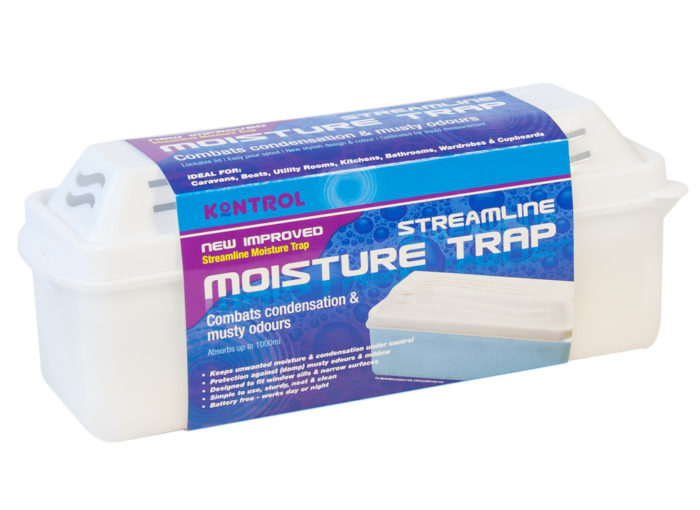
Image Credit: Kontrol
A significant number of questions posted by readers on the GBA site are variations of, “Will this wall detail (or roof detail) trap moisture?”
When I entered “trap moisture” into the GBA search box, I got 182 results. The search terms “trapping moisture” yielded another 104 results. Clearly, there is a high level of concern around the issue.
Many of these worries are baseless. Most worries arise from the presence of a vapor-impermeable layer — for example, polyethylene, rigid foam, or a foil-faced product — somewhere in the building assembly. But the presence of one of these products isn’t necessarily risky. For a product to contribute to a moisture problem — or, to use the popular phrase, to “trap moisture” — you need two factors: (1) a mechanism or driving force that allows moisture to enter the building assembly, and (2) no easy way for the moisture to leave the assembly. In other words, you need some type of ratcheting mechanism — a one-way valve or a “lobster trap” — for a problem to develop.
Here’s how a building scientins would express this concept: “You won’t have a problem unless the rate of wetting exceeds the rate of drying.”
Misunderstandings about “trapping moisture” occur when homeowners fail to think about basic moisture drive mechanisms and drying mechanisms. If you’re interested in figuring out these puzzles for yourself, ask yourself these questions:
Weekly Newsletter
Get building science and energy efficiency advice, plus special offers, in your inbox.

This article is only available to GBA Prime Members
Sign up for a free trial and get instant access to this article as well as GBA’s complete library of premium articles and construction details.
Start Free TrialAlready a member? Log in















7 Comments
Tile Shower on Exterior Wall
We are building an EIFS wall in Zone 5 with 4" ext. foam and interior 5.5" Roxul batts.
The shower stall is on two exterior walls and will have a vapor barrier.
This creates a wall cavity with two vapor barriers.
Drying by diffusion seems to only be able to work through studs, top and bottom plates.
Ventilation is also only available via any gaps between studs, top and bottom plates.
Is this an issue?
Not all foams are vapor barriers.
At 4" unfaced type-II EPS is still over 0.5 perms, which is more vapor permeable than 2x timber, and more than half as permeable as dry half-inch OSB. The vapor permeance of the EIFS finish varies, and that (more so than the foam) would be what makes the difference.
But even if air leaks into the vapor-trap stud bays, with 4" of foam on the exterior the sheathing stays warm enough to not collect moisture. The only real risk is from bulk water incursions.
To prevent convective transfer of moisture into the stud bays you really need to caulk "...any gaps between studs, top and bottom plates..." with a high quality polyurethane caulk, since that presents a higher risk (and bigger heat loss), than the interior side vapor barrier.
Response to Eric Burhop
Eric,
Lots of houses with exterior rigid foam on the walls also have vapor-impermeable finishes on the walls of showers. As long as the interior wall finish materials are installed with attention to airtightness, and as long as the exterior is properly flashed to prevent bulk water entry, experience shows that these walls are fine.
If I were you, I wouldn't worry.
other directions?
My guess is that your interior side sheathing won't form a perfect air seal against the studs and when there is a humidity difference between the shower stud cavities and adjacent (presumably permeable drywall covered) ones, air will flow horizontally, causing drying (it doesn't take much). You could do something to encourage such flow (a thin mesh layer between the sheathing and the studs?).
This is worth reading:
https://buildingscience.com/documents/digests/bsd-146-eifs-problems-and-solutions
Hello, I’m in the process of renovating a 1980s house with 2x4 fiberglass walls with interior plastic sheeting. I’d like to put recycled polyiso insulation on the outside and not mess with the inside. Is this wall assembly risky?
Thanks.
Jethro,
No, it won't be risky. Ideally, you will choose to install rigid foam that meets the minimum thickness rules described in this article: "Calculating the Minimum Thickness of Rigid Foam Sheathing."
Assuming that you understand those rules, you're probably worrying about the interior polyethylene. You probably don't need to worry, however, as explained in these two articles:
"The Exterior Rigid Foam is Too Thin!"
"Rethinking the Rules on Minimum Foam Thickness"
Very helpful, thanks!
Log in or become a member to post a comment.
Sign up Log in